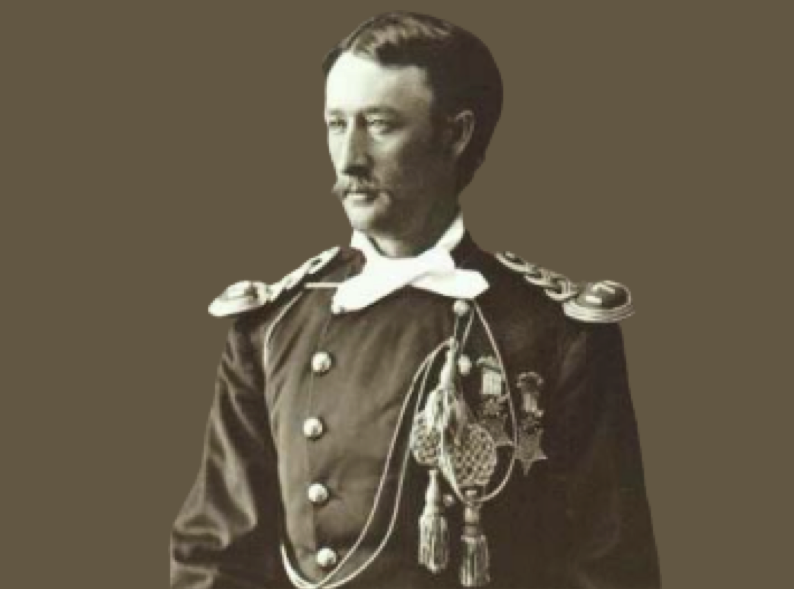National Cemetery Administration
Medal of Honor Recipients: Captain Thomas Custer
The First Double Recipient: Capturing Enemy Colors
At 16 years old, Custer enlisted in September 1861 as a private in the 21st Ohio Volunteer Infantry. In spite of his humble beginnings, Thomas Custer distinguished himself in battle twice, for which he received two Medals of Honor, the first of nineteen veterans to do so.
Early Enlistment
With the 21st Ohio, Custer participated in major Western Theater action including the battles of Stone's River, Chickamauga, Chattanooga, and the Atlanta Campaign. A capable young soldier, he obtained duty on the staff of Major General James Negley in April 1863. He remained in this position until mustering out in October 1864.
Seeking further military service, Custer reenlisted, earning a promotion to second lieutenant. He also transferred to the 6th Michigan Cavalry, which served in Virginia. In the Eastern Theater, Thomas worked hard for his brother, Brigadier General George Custer, on staff in the Shenandoah Valley. He fought bravely at Waynesboro, Dinwiddie Courthouse, and Five Forks — which led to a battlefield promotion to brevet major.
The Medals of Honor
During an engagement at Namozine Church on April 3, 1865, Custer captured a Confederate flag. For this he received the Medal of Honor.
Three days later, Custer again demonstrated his valor at the Battle of Sailor's Creek. Astride his horse, Custer leapt over enemy works to capture two color standards. He was wounded in his face and his horse was shot out from under him. For this, Custer received a second Medal of Honor — the first of nineteen men so honored.
 Thomas Custer wearing two Medals of Honor, c.1875 (Mead Army Museum, Amherst College).
Thomas Custer wearing two Medals of Honor, c.1875 (Mead Army Museum, Amherst College). The Significance of "Capturing the Flag"
In the Civil War, regimental flags, or colors, were of great military significance. They played a role in guiding troop movements amid the chaos of battle. The loss of a flag meant troop confusion, disarray, and the potential for taking friendly fire. Also, the communities from which the regiment originated often paid for the flags, so they symbolized local pride and sentimentality for the soldiers. As flag capture meant low morale and shame, Custer's double-flag capture took the honor of two enemy regiments.
Custer's Military Career Continues
In 1866, commissioned as first lieutenant in the 7th U.S. Cavalry, he fought in the Dakota and Montana territories. Promoted to captain in 1875, he took command of Company C. By this time he and his brothers, George and Boston (b. 1848), all served in the 7th Cavalry. Their fates were united to the end. Following the Battle of Little Bighorn on June 25, 1876, the bodies of the three Custer brothers were found near one another. Thomas was initially buried on the battlefield, but in 1877 his remains were reinterred in Fort Leavenworth National Cemetery, Kansas.
Two-Time Medal of Honor Recipients at VA National Cemeteries
Six two-time Medal of Honor Recipients are buried in VA National Cemeteries:

















